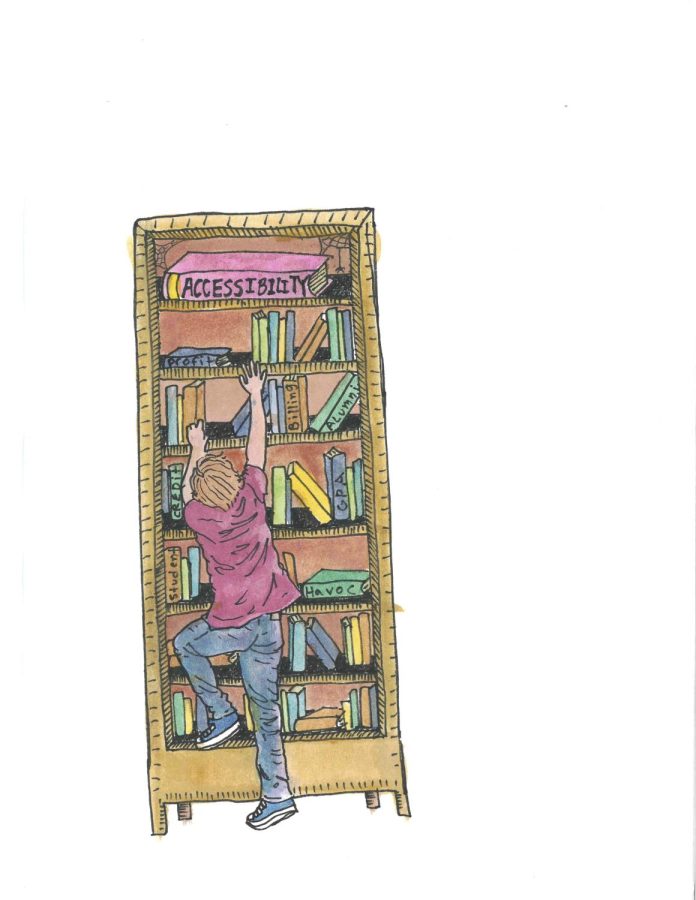EDITORIAL: Loyola does the bare minimum for accessibility
May 6, 2022
When it comes to the effort Loyola puts in to help people with disabilities navigate campus, the school toes the line of compliance by performing only the bare minimum.
While the campus is technically compliant with the Americans with Disabilities Act, compliance isn’t enough. Students are paying hundreds of thousands of dollars to be here, and they deserve to be able to access their education and exist comfortably on campus.
For passenger elevators, the ADA requires that call buttons be within reach, there be enough space that a wheelchair can turn in place, and the doors only close after a three second minimum delay even when the “close door” button is pushed. Some elevators on campus do not even meet that final requirement, like those in the Communications/Music Complex, but that is far from the only problem.
Take, for instance, the issue of the elevators in Buddig and Carrollton Hall failing on a somewhat regular basis. For some, the elevators breaking means a longer and more difficult journey. For others, that journey is made impossible as they are left either on their floor or on the ground.
But, accessibility goes beyond the obvious things, like elevators. Accessibility requires accommodating students at every level, inside the classroom and out. Living and learning at Loyola shouldn’t be a strain. The designated areas across campus for accessible parking are a start, but it’s simply not enough.
In terms of parking, the ADA requires that any accessible parking be close to pedestrian entrances relative to other parking.Once again, Loyola does follow these guidelines, with spaces in the Freret Garage next to Buddig designated for accessible parking. Whether there is enough space, though, is questionable. Parking in campus garages is already packed as tight as possible, and the accessible parking is no exception. In some cases, there is barely enough room for a motorized ramp.
In places where there is actual room, like the spots in front of Miller Hall, they are not even accessible due to the pylons Loyola placed to block off the road that leads into the campus interior.
These issues don’t even have the hardest solutions.
For the elevators, Loyola can at least notify the student body via email whenever the elevators are under maintenance. The university should also allocate funds at the beginning of every year for annual service checks. With parking, all that has to be done is the lines being repainted in order to allow for more space, making it more accessible. If it’s that easy, what are they waiting for?
Even though these solutions are simple at face value, nothing that we know of is being done or will be done anytime soon. Loyola is leaving students with disabilities on the backburner.
Chris Rice, director of residential life, said in a recent interview that all of the residence halls on campus are compliant with the ADA, making it seem like the university has no active plans for updates.
It seems like compliance is enough for the university, but it’s not for us. But the administration isn’t the only one leaving students with disabilities on hold.
Right now, the only ones advocating for more accessibility options are the students that are directly affected by the university’s inaction.
If change is to be made, then every student must take a stance, not just those with disabilities, and we need to do so together as a united front.








